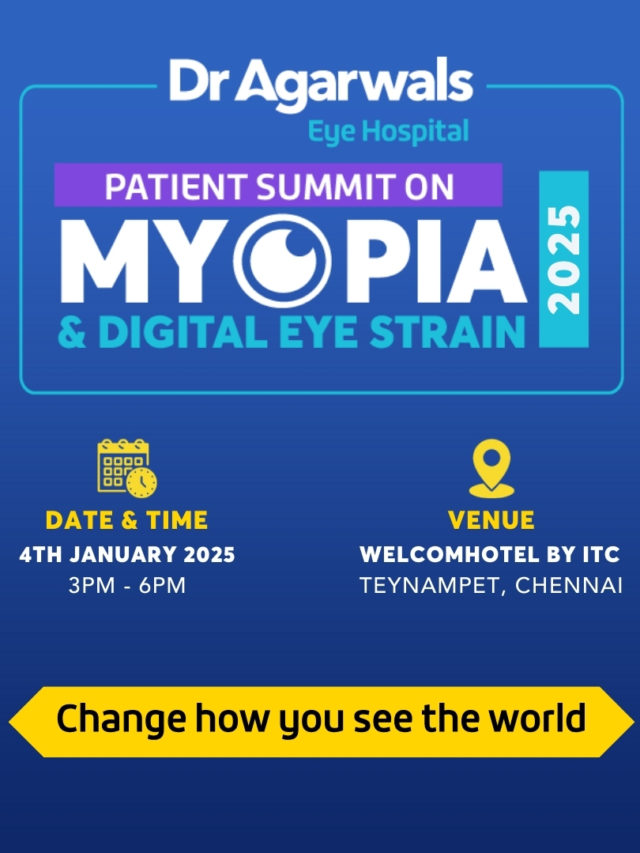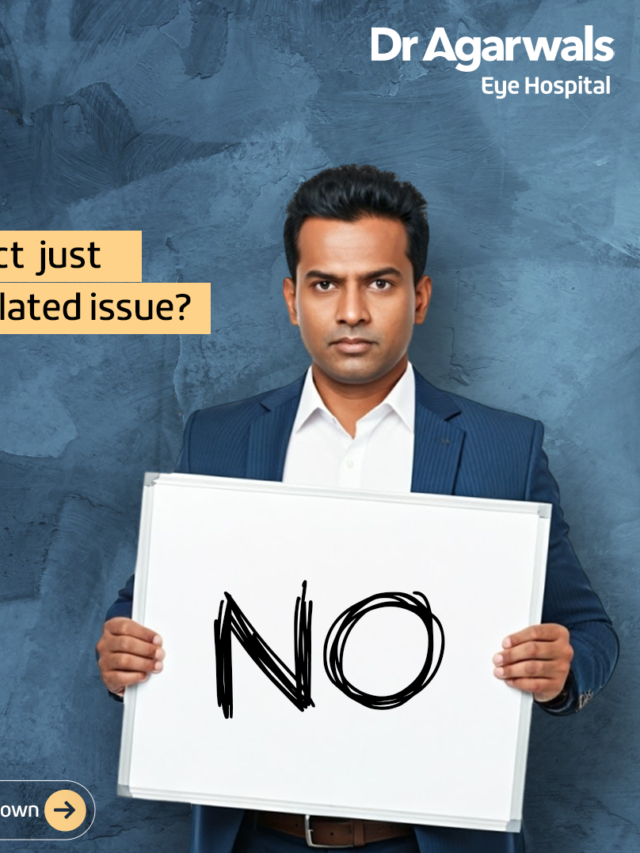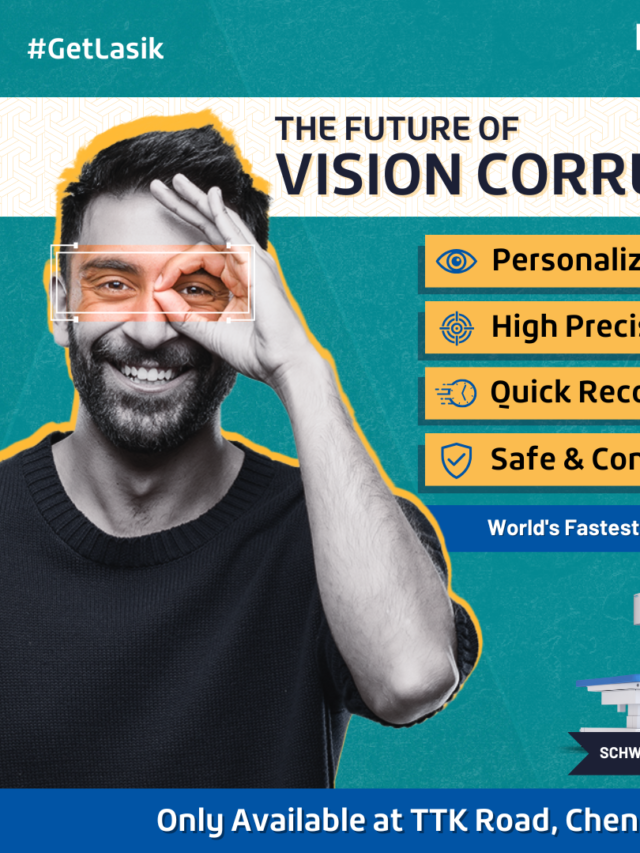The eye is an amazing organ, allowing us to see the world around us. At the heart of our vision lies the cornea, a tiny but essential part of the eye that plays a significant role in how well we see. This article delves into the function of the cornea, its impact on vision clarity, common corneal conditions, and how you can keep your cornea healthy.
What is the Cornea?
The cornea is the outermost, transparent layer of the eye, resembling a clear, dome-shaped window. This tissue is essential because it allows light to pass into the eye while protecting deeper structures like the lens, iris, and retina. Although it looks simple, the cornea is a highly specialized structure designed to focus light precisely onto the retina at the back of the eye, where images are formed and processed by the brain.
The cornea serves two primary functions:
-
അപവർത്തനം: The cornea bends and focuses light as it enters the eye, helping to create a sharp image.
-
Protection: Acting as a physical barrier, the cornea keeps out dust, debris, and microorganisms that could harm the sensitive inner parts of the eye.
Layers of the Cornea: A Closer Look
The cornea is composed of five distinct layers, each with a specific purpose in maintaining its shape and clarity:
|
Epithelium |
This outermost layer provides a barrier against dust, germs, and injury. It also absorbs oxygen and nutrients from tears, which are vital for corneal health. |
|
Bowman’s Layer |
A tough, thin layer that protects the underlying stroma. While it does not regenerate if damaged, it helps maintain the cornea’s smooth contour. |
|
Stroma |
Comprising around 90% of the cornea’s thickness, this layer is mostly water and collagen, which gives the cornea its structure and transparency. Its orderly arrangement is key to keeping the cornea clear. |
|
Descemet’s Membrane |
A thin yet resilient layer that helps filter out harmful substances and keeps the cornea intact even under stress. |
|
Endothelium |
The innermost layer, which regulates the amount of fluid in the cornea. A healthy endothelium is essential for keeping the cornea clear, as excess fluid can cause the cornea to swell and become cloudy. |
How Does the Cornea Contribute to Vision?
Vision clarity depends largely on the cornea’s shape and transparency. As light enters the eye, the cornea bends (refracts) it toward the retina, where the brain processes the light into images. A healthy cornea bends light perfectly, allowing for sharp vision.
However, even a slight imperfection in the cornea’s shape can distort how light is focused on the retina, leading to blurry or distorted vision. This makes the cornea one of the most critical parts of the visual system.
Interesting Fact: Why Doesn’t the Cornea Have Blood Vessels?
One of the cornea’s most interesting traits is that it’s avascular—meaning it has no blood vessels. Instead, it relies on tears and the aqueous humor (fluid inside the eye) to get its nutrients and oxygen. This lack of blood vessels is crucial for keeping the cornea transparent, as blood vessels would scatter light and interfere with vision.
Common Corneal Conditions That Affect Vision
Several conditions can affect the cornea’s ability to refract light properly, leading to vision issues. Let’s explore the most common ones:
Refractive Errors
-
Myopia (Nearsightedness): The cornea is too curved, causing light to focus in front of the retina, making distant objects appear blurry.
-
ഹൈപ്പറോപിയ (ദൂരക്കാഴ്ച): The cornea is too flat, causing light to focus behind the retina, making nearby objects blurry.
-
ആസ്റ്റിഗ്മാറ്റിസം: This occurs when the cornea has an irregular shape, leading to blurry or distorted vision at all distances. It is often present alongside myopia or hyperopia.
-
Presbyopia: Although not a corneal condition, presbyopia affects the eye’s lens flexibility, making it harder to focus on nearby objects. It typically occurs with age.
-
കെരാട്ടോകോണസ്: A condition where the cornea becomes thin and cone-shaped, കെരാട്ടോകോണസ് distorts vision by causing light to scatter rather than focus properly on the retina. This progressive condition can severely impact vision if left untreated, but treatments like corneal cross-linking can help slow its progression.
-
കോർണിയ പാടുകൾ: Injuries, infections, or diseases can lead to scars on the cornea, which block or scatter light, reducing vision clarity. Corneal scars may require surgery or laser treatments to restore vision.
-
Corneal Dystrophies: These are a group of genetic conditions where abnormal material builds up in the cornea, clouding it and reducing transparency. Treatments range from medication to corneal transplants.
-
ഡ്രൈ ഐ സിൻഡ്രോം: The cornea needs moisture to remain healthy and clear. ഡ്രൈ ഐ സിൻഡ്രോം occurs when the eyes don’t produce enough tears or when the quality of the tears is poor, leading to discomfort and blurred vision.
-
Fuchs’ Dystrophy: This is a degenerative disorder where the endothelium layer of the cornea breaks down, causing fluid buildup. Over time, the cornea can swell and become cloudy, resulting in vision loss. Corneal transplants are often necessary in advanced cases.
Why Refractive Errors Matter
Refractive errors are by far the most common corneal-related vision issues. They occur when the cornea fails to focus light correctly on the retina. Here’s why addressing them is essential:
-
Myopia and Hyperopia: Both of these conditions affect the sharpness of vision at different distances, either close-up or far away. Left uncorrected, they can lead to eye strain, headaches, and difficulties in daily activities like reading or driving.
-
ആസ്റ്റിഗ്മാറ്റിസം: Because it involves an irregular cornea shape, astigmatism can cause double vision, halos around lights, and difficulty seeing fine details at any distance. For patients with refractive errors, corrective options include glasses, contact lenses, or ലസിക് ശസ്ത്രക്രിയ, which reshapes the cornea to improve how it focuses light on the retina.
A Success Story
Imagine this scenario: A 25-year-old patient, struggling with keratoconus, had been experiencing progressively blurry and distorted vision for years. She could no longer drive at night or read comfortably. After visiting Dr Agarwals Eye Hospital, she was diagnosed and underwent a corneal cross-linking procedure, which helped stabilize her vision and halt the progression of keratoconus. Within months, she was able to enjoy clear vision again, giving her the confidence to continue her daily activities without strain.
Corneal Transplants: Restoring Vision
For patients with severe corneal damage, such as advanced keratoconus or extensive scarring, a corneal transplant may be necessary. This involves removing the damaged cornea and replacing it with healthy donor tissue. Corneal transplants are one of the most successful transplant procedures, with a high success rate.
Types of Corneal Transplants
-
Penetrating Keratoplasty (PK): A full-thickness transplant where the entire damaged cornea is replaced.
-
Endothelial Keratoplasty (EK): A partial transplant that only replaces the innermost layers of the cornea.
Keeping Your Cornea Healthy
A healthy cornea is essential for clear vision, so it’s important to take steps to protect it. Here are a few tips:
-
സൺഗ്ലാസുകൾ ധരിക്കുക: Prolonged exposure to UV rays can damage the cornea, leading to conditions like pterygium or even cataracts. Wearing sunglasses with 100% UV protection is a simple way to safeguard your eyes.
-
Practice Good Hygiene: If you wear contact lenses, follow proper hygiene to prevent infections that can damage the cornea. Always wash your hands before handling lenses and use the appropriate cleaning solutions.
-
Avoid Eye Rubbing: Rubbing your eyes can scratch the cornea, especially if there’s debris or dust present. In extreme cases, excessive rubbing can contribute to conditions like keratoconus.
-
Eat a Balanced Diet: Nutrients like omega-3 fatty acids, vitamins A and C, and zinc help keep your cornea healthy by reducing inflammation and supporting the cornea’s structure.
-
Regular Eye Check-ups: Regular visits to an eye doctor are key to detecting any corneal issues early. Your eye doctor can check for signs of dry eye, refractive errors, or other conditions that could affect vision clarity.
Advanced Treatments at Dr Agarwals Eye Hospital
At Dr Agarwals Eye Hospital, we offer a full spectrum of treatments for corneal conditions, from corrective lenses to advanced surgical procedures like LASIK and corneal transplants. Our advanced technology and team of expert surgeons are here to provide you with the best possible care.




